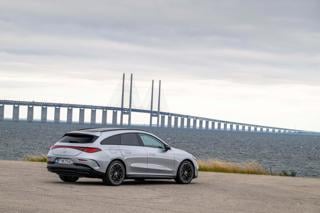A start-up FinTech organisation claims to have solved the conundrum of pay-per-mile finance for fleet operators with a new proposition targeting ultra-low emission vehicles (ULEVs).
Zeti (originally an acronym of Zero Emission Transport Investment) was founded by former Octopus investment director Dan Saunders in June 2020.
It initially offered its services to private individuals in the Hackney Carriages taxi sector, but expanded to become a full business-to-business operation last year and is rapidly closing in on 1,000 funded vehicles.
Fleets can choose from two funding options – leasing or loan – with the finance or repayment based on a pence per mile calculation.
Pay-per-use has been mooted by a number of leasing companies in recent years, but none has managed to finesse the technology. However, Saunders was the architect of a similar model at Octopus, which trialled in 2018 with Heathrow Airport.
It was calculated on the cost of the total investment, divided by the operating cycle and the anticipated annual mileage.
Octopus has since dropped the offering and is now one of the organisations financing the Zeti proposition.
“We had demand for pay-as-yougo financing (at Octopus) but we needed access to more funds,” said Saunders. “The technology is also key as it connects the data from the vehicle with the money.”
The key enabler, which allowed Zeti to “crack this old chestnut of pence per mile”, according to Dave Kennon, director of automotive partnerships, was matching the technology to the finance, buoyed by the growing interest in ESG (environmental, social and governance) funding.
“We have repositioned transport as an ESG asset class to access pools of capital that don’t normally come into the automotive sector,” Kennon said.
The pricing formula is based on a fleet assessment of the mileage of each individual vehicle which is pooled into a portfolio to set the fixed pence per mile rate. This approach enables fleets to maximise their utilisation without having to shuffle vehicles to balance out mileage.
“There are no excess mileage charges,” Kennon added. “And if they don’t drive as many miles in a year as they thought, it brings the effective cost of finance down because they will pay less for the vehicle.”
Each vehicle – Zeti funds cars and vans but restricted to full electric and plug-in hybrid – is fitted with telematics which tracks daily mileage and triggers the monthly bill.
Zeti is also building a new platform called Zero which will interpret the data to create fleet management reports on driver behaviour and CO2/ NOx emissions for the customer.
“While we have both leasing and ownership propositions, we are finding ownership (via the loan facility) is the most popular route because of the tax breaks available,” Kennon said. “It means a positive cashflow in year one because of the 100% writing down allowance.”
The pricing proposition is being used by several private hire firms, but Saunders believes it will be of interest to any fleet that has business-critical vehicles and for whom cashflow is important.
“The feedback from fleets is that the key is cash optimisation and transparency,” he said. “The majority of fleets don’t know how they will be using their vehicles from one day to the next or from month-to-month, and this keeps costs low and gives them flexibility.”
Kennon also believes it will be of significant interest to last-mile delivery companies, particularly as city centres embrace clean air zones.
And he welcomes conversations with vehicle manufacturers that have customers who are unable to get a finance solution for ULEVs.
“Our pay-per-mile model stacks up well against traditional leasing,” Kennon said. “We find the pools of capital, but we don’t ratchet up the interest rate for commission; we give the end user the lowest rates we can. We only get paid when the end user pays their monthly bill, and we take a small percentage of those payments.”
Contracts terms are flexible and, so far, vary from two-to-10 years, while financing demand from fleets has already topped £200 million.
The funding model is not restricted by mileage; it works equally as well for high mileage operators.
Saunders anticipates rapid growth over the next 18 months to 4,000 vehicles with van fleets providing the catalyst as more electric light commercial vehicles (e-LCVs) enter the market.
However, the proposition isn’t limited to vehicles. “We have figured out how to finance the vehicles and we can now package this for other elements; for example, charging infrastructure as per mile or per kWh. We are already in talks with fleets about this,” Saunders said.
Insurance is also a possibility, most likely in partnership with an insurance company, as is energy supply and pence per mile daily rental.
“There are lots of options to tailor the service,” he added.





















Login to comment
Comments
No comments have been made yet.